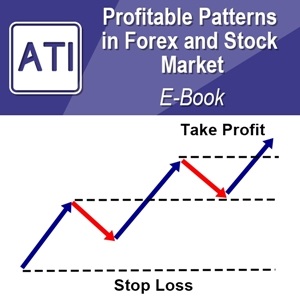Below is the Text Only Excerpt automatically extracted From the Full PDF Article for Non PDF Viewer:
Basic Math and Statistics for Finance and Investment
Following equations are partially applicable for the benefit of your Trading and Investment but not compulsory. Normally these equations are quite basic for solving many finance and investment problems in real world sense. “Introductory Statistics” and “Time value of Money” parts should be understood by all traders and investors before they trade on real live trading. It is our recommendation even though many traders skip these parts.
1. Introductory Statistics
N = number of observation
Mean,
Population variance,
Population standard deviation,
Population Covariance =
Sample variance,
Sample standard deviation,
Sample covariance =
Correlation Coefficient, r = using sample covariance.
2. Time Value of Money
Rate of return (ROR)
Rate of return,
Where
C1 = realization of investment at the end of the year
C0 = investment at the beginning of the year
Future value of a single sum
Future value,
Where
PV = principal or present value of a single sum
r = interest rate
n = number of compounding periods
Present value of a single sum
Present value,
Where
FV = future value or cash flow at the end of period n
r = discount rate
n = number of compounding periods
Future value of a series of cash flows
Future value,
Where
Ct = Cash flow at the end of period n
r = interest rate
n = number of compounding periods
Present value of a series of cash flows
Present value,
Where
Ct = Cash flow the end of period n
r = interest rate
n = number of compounding periods
Net present value
Net present value, if the capital outlay occurs only at the beginning of the project
Net present value, if the capital outlay occurs in different years of the project
Where
CO = the capital outlays at the beginning of the project
COt = the capital outlays at end of period n
Ct = Cash flow the end of period n
r = interest rate
n = number of compounding periods
Present value of a perpetuity
Present value of a perpetuity,
Where
P = the cash flow received/paid under annuity (i.e. periodic payment)
r = the compound interest rate per period
Internal rate of return (IRR)
The internal rate of return is the discount rate that makes net present value equal to zero.
Where
Cn = Cash flow the end of period n
IRR = internal rate of return
n = period
3. Compounding Interest basics
Amount in compound interest
Amount, or
Where
i = r/k = interest rate per period
n = kt = total number of conversion periods
Where
r = nominal interest rate per year
k = number of conversion periods per year
t = number of years (or term)
Present value in compound interest
Amount in continuous interest
Amount,
Where
e = natural base = 2.718281828
Present value in continuous interest
Present value,
4. Effective Interest Rate
Annual percentage rate (= nominal annual interest rate)
Annual percentage rate,
Where
i = rate per compounding period
n = number of compound periods in a year
Effective annual interest rate in compound interest transaction
Effective annual interest rate,
Where
r = nominal (= simple) interest rate per year (= APR)
k = number of conversions per year
Effective annual interest rate in continuous interest transaction
Effective annual interest,
Where
r = nominal (=simple) interest rate per year (=APR)
5. Annuity Equations
Future value of an ordinary annuity
Future value of an ordinary annuity,
Where
P = the cash flow received/paid under the annuity (i.e. periodic payment)
n = the number of cash flows that form the annuity
r = the compound interest rate per period
Present value of an ordinary annuity
Present value of an ordinary annuity,
Where
P = the cash flow received/paid under annuity (i.e. periodic payment)
n = the number of cash flows that form the annuity
r = the compound interest rate per period
Periodic payment into a sinking fund (=future value)
Periodic payment,
Where
FV = the future value to meet
n = the number of cash flows that form the annuity
r = the compound interest rate per period
Future value of an annuity due
Future value of an annuity due,
Where
P = the cash flow received/paid under the annuity
n = the number of cash flows that form the annuity
r = the compound interest rate per period
Present value of an annuity due
Present value of an annuity due,
Where
P = the cash flow received/paid under annuity (i.e. periodic payment)
n = the number of cash flows that form the annuity
r = the compound interest rate per period
Present value of a deferred annuity
Present value of a deferred annuity,
P = the cash flow received/paid under annuity (i.e. periodic payment)
n = the number of cash flows that form the annuity
r = the compound interest rate per period
x = the number of period before the first cash flow
Present value of a perpetuity
Present value of a perpetuity,
Where
P = the cash flow received/paid under annuity (i.e. periodic payment)
r = the compound interest rate per period




